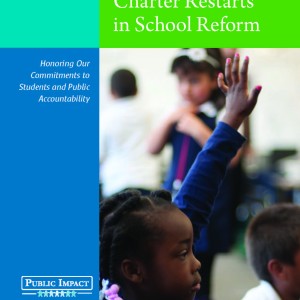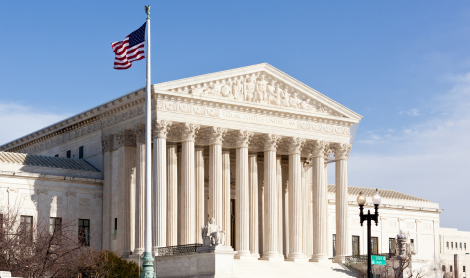A recent story in the Columbus Dispatch detailed the creative ways that low-performing charter schools in Ohio are avoiding closure. According to the report, “some schools have avoided the state’s charter-closing laws after enrolling more students with disabilities, which exempted them. Others were closed by their sponsors for poor performance only to find a new sponsor. And recently, one charter operator whose school was shut down for bleak academic performance updated the building, staff and school board, and opened another school in the same spot under a new name.”
 Closing a school is never easy. And, unfortunately, even when closure for failure to perform is part of the bargain from the start, and even where there are strong laws on the books designed to make the process at least more predictable and less political, if no less heart-wrenching and disruptive, failing schools will often find ways to avoid accountability. Even when the adults in charge have the courage to do the right thing, other adults, with other interests, will get in the way.
Closing a school is never easy. And, unfortunately, even when closure for failure to perform is part of the bargain from the start, and even where there are strong laws on the books designed to make the process at least more predictable and less political, if no less heart-wrenching and disruptive, failing schools will often find ways to avoid accountability. Even when the adults in charge have the courage to do the right thing, other adults, with other interests, will get in the way.
A new report by Public Impact’s Daniela Doyle and Tim Field explores a different approach to closure, one where accountability for failure isn’t avoided through authorizer shopping or shell games and one which tries to minimize the disruption and harm that closure can cause for students, especially when a school is closed in a community where no better options exist.
In The Role of Charter Restarts in School Reform: Honoring our Commitments to Students and Public Accountability, Doyle and Field explore the concept of charter school restarts, a form of school closure where all the kids can stay while the school’s operator and usually its governing board have to go. The authors define “a charter school restart” as “a change in school operator and a change in school governance, while continuing to serve the same students.” They take pains to note that the restarts they write about “differ from internal turnaround attempts by changing both the school operator and school governance” and “from instances in which a charter school is closed and a new-start charter opens in its place.” By restart, they mean circumstances where a new, high-quality organization with a proven track record operates the school and where the new school automatically reenrolls and continues to serve the same students that attended the former school that is closed.
The report was commissioned by the NewSchools Venture Fund and builds on Public Impact’s Bryan Hassel’s and Lucy Steiner’s earlier work on “starting fresh” which examined lessons from district efforts at reconstitution and authorizer efforts to close low-performing charters and served as the basis for NACSA’s Starting Fresh series. The new report describes how charter restarts proceeded at five charters in five cities and the internal and external factors that need to be considered and offers recommendations for the governing boards of existing low-performing charters and for their authorizers.
For the governing boards of existing low-performing charter schools, the authors recommend:
1. Incorporating the restart strategy into school improvement planning,
2. Augmenting the board’s capacity for restart, and
3. Championing the restart publicly to build support for it in the community.
When considering whether to close a low-performing charter while allowing the students to remain in the school, the authors suggest that authorizers:
1. Encourage boards of struggling schools to consider a restart as part of school improvement planning,
2. Establish a transparent and rigorous process to evaluate and approve restart plans, and
3. Establish a clear and comprehensive process for implementing the restart plan once a plan is approved.
Charter school restarts are a relatively new phenomenon and are rare. Research and experience also indicates that they extremely difficult to do well. It is already hard enough to start a new school from scratch. It is an entirely different undertaking to start a new school by taking responsibility for educating an entire population of students who have, in some cases for their entire school careers, been denied access to a quality education.
Nonetheless, it is also true that in far too many communities across the country children in chronically failing charter schools have no other options but to return to other chronically failing, and in many cases, lower performing schools. For them, closure only means disruption and displacement.
As the report’s authors note, there are many charter schools that fail to live up to their promise but there are others that are redefining what is possible by demonstrating that children in even the most challenging of circumstances can achieve great things. Under the right conditions, and with careful planning, a priority for student needs over adult interests, and a hunger for challenge, these proven operators may be able to create new opportunities where no others exist.
Avoiding accountability for failure is for cowards. A real restart takes real courage.


